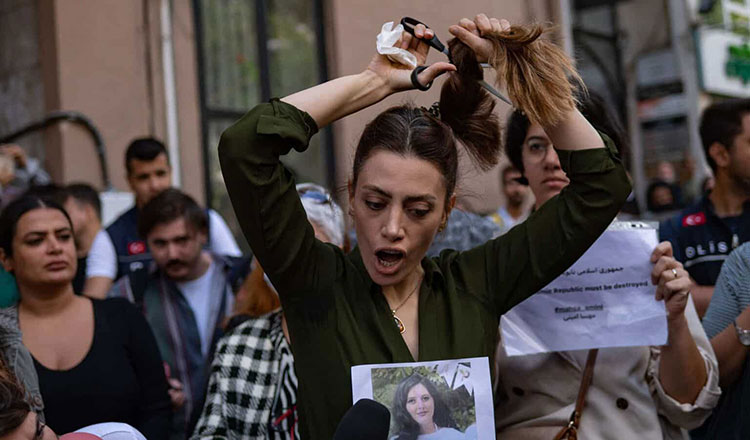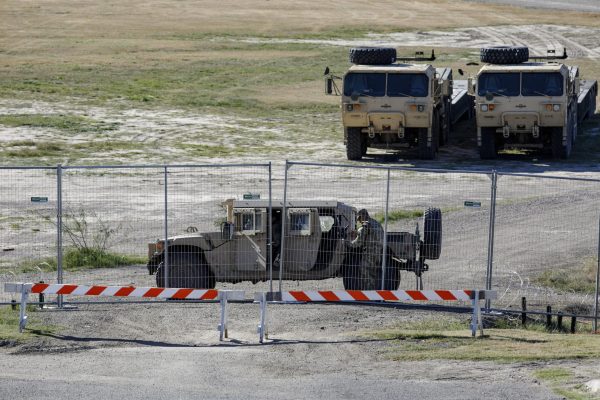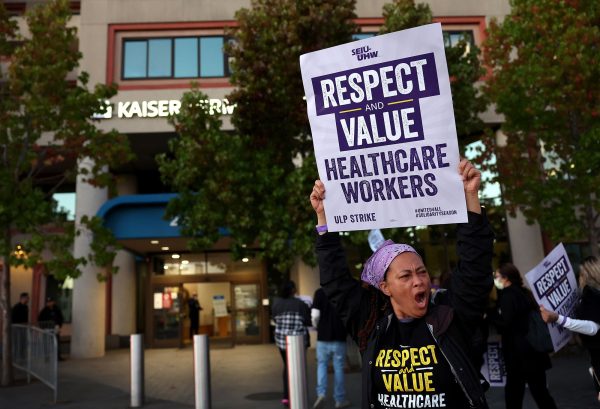How is a ponytail a crime?
Iranian women protest their mistreatment
https://www.khmertimeskh.com/501169441/iran-protests-a-struggle-for-self-determination/
Nasibe Samsaei, an Iranian woman cuts her ponytail off during a protest following the death of an Iranian woman after her arrest by the country’s morality police in Tehran.
Mahsa Amini, a 22-year old Iranian woman, was taken into custody and later died. Her crime; not wearing her hijab properly. Her death initiated protests across Iran resulting in over seven confirmed deaths, adding to the long list of women unable to share their voice. Currently across the world, women have been cutting their hair and removing their hijabs in protest of her unlawful death.
Hijab, is an Arabic term for cover or barrier, more commonly known as the garment worn by some Muslim women to cover their hair. The Qur’an, the holy book/text of Islam, instructs Muslim men and women to dress modestly, and for some, the hijab is worn by Muslim girls and women to maintain modesty and privacy from unrelated males. The key word here is for some, the Holy Qur’an does not mandate wearing hijabs or other headgear for Muslim women, it is supposed to be a choice. However, under current leadership, Iran mandates women to wear head coverings.
On September 16, 2022, Amini died in a hospital in Tehran, Iran, under which many would consider suspicious circumstances. Amini was a Kurdish Iranian who was visiting Tehran, when she was arrested for inappropriately wearing her hijab showcasing some of her hair. The morality police then sent her to a reeducation camp where she died in custody days later. Her family suspects that she was brutalized while in custody, as the authorities stated she passed from heart problems although she never had any reported heart issues. This set off protests nation-wide and uncovered the deaths of many other girls and exposed the lifestyle of the Iranian people.
“The hijab became compulsory in 1981, two years after the Islamic Revolution in Iran,” as recorded on “‘They Have Found The Courage’: Iraninan Women Go Hijab-Less In Public Amid Protests.” “Many women have flouted the rule over the years and pushed the boundaries of what officials say is acceptable clothing. Women have also launched campaigns against the discriminatory law, although many have been pressured by the state and forced to leave the country.”
Many Iranian women have taken to the streets to protest both their circumstances and the death of women like Amini. The most recent addition to the death toll was 16-year old Nika Shakarami, with many publicly declaring her death as a “sign of criminal rule of the Islamic Republic.” For many Iranian women, hair is a sign of beauty, but the Islamic Republic has forced them to cover it. Thus, in many of the protests broadcasted on social media, women are seen either burning their hijabs, putting their uncovered hair in ponytails, and cutting their hair. Shouting for the world to hear, ‘women, life, freedom’ and ‘no to the headscarf, no to the turban, yes to freedom and equality.’
“Cutting one’s hair is a meaningful form of protest. In the history of Iran, women did not have enough power to stand up, they cut their hair. It has always been a symbol of rebellion and to start a fight,” an unknown source from euronews.culture stated.
In ancient Iranian mythology, women’s hair was a symbol of fertility and blessing, so cutting their hair symbolizes the termination of this ideology for these women. This is not the first time Iranian people have had to protest for women’s rights. March 8, 1979, weeks after Iran established its theocratic regime, women took to the streets to protest after rumors spread that the government would enforce mandatory covering. In 2017, the Girls of Revolution Street protest began when Vida Movahed, a 31-year old mother, removed her headscarf and waved it in the air on top of a platform on Revolution Street in central Tehran. In 2018, women members of the parliament arranged to have Iran’s Parliamentary Research Center (PRC) study the public opinion on the hijab. The research found that more than half (at least 55 percent) of Iranians disagreed with the state’s religious rulings forcing rules on women’s dress.
Iran is an Islamic country where, according to official statistics, over 99 percent of the citizens are Muslim. Many contest that the current laws for women do not reflect the cultural norms, values, and spiritual beliefs of the majority. It is currently based on the government’s interpretation of the Islamic tradition, Hadith (collections of sayings and teachings of the prophet Muhammad), and Qur’an. According to Iranian Civil Law, Article 134, the sentence for women showing their hair without a hijab is 15 years in prison. Women are disproportionately represented in terms of law enforcement, if a car hits a pedestrian the compensation and punishment can be halved if the victim is a woman. This is why women have been constantly protesting about their rights being stripped away and trampled on.
“Iranian women under age 24 were born with internet and have access to smartphones and social media. They know how women live in other parts of the world and they want the same level of freedom for themselves. They have learned to say no to things they do not like and they do not always follow religious rules and traditions,” graphic designer who lives in Tehran Mina stated.
With the popularization of social media people in Iran are able to share their stories and communicate. In an authoritarian society, Iranians often feel as if they cannot be their true authentic selves, so on the internet they are able to express themselves. However, since the current wave of protests, the Iranian government has used its investments in its national digital network to conduct Internet shutdowns and has also increased other forms of censorship. As recorded on “How the Islamic Republic has enslaved Iran’s Internet,” more than 60 percent of Iranian traffic goes through the mobile Internet, which protesters use on the street to document their protest. In some regions, Iranians are unable to access online news and information and communicate around the world. Online services such as Instagram and WhatsApp were blocked and authorities have been targeting Virtual Private Network (VPNs).
When it comes to human rights, there are different views all over the world. Some believe that others should not have the same rights because of the way they were born. This is why many have been protesting and standing in solidarity with the Iranian women. Burning their hijabs and cutting their hair as one way nevertheless, many of these protests have resulted in the deaths of many young Iranian women standing up for their rights.







